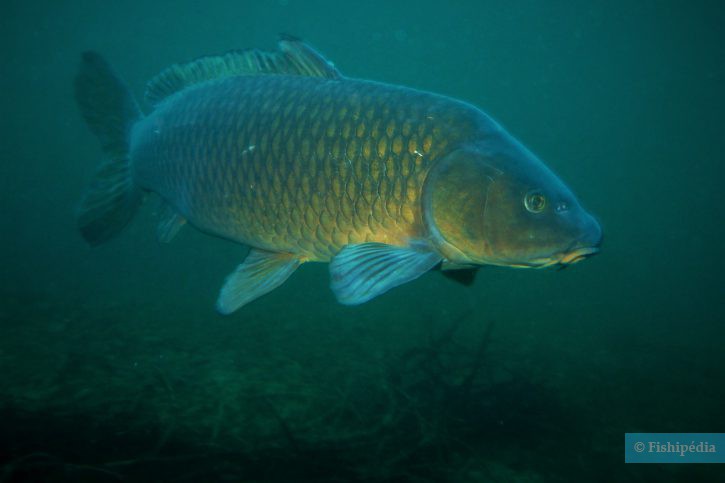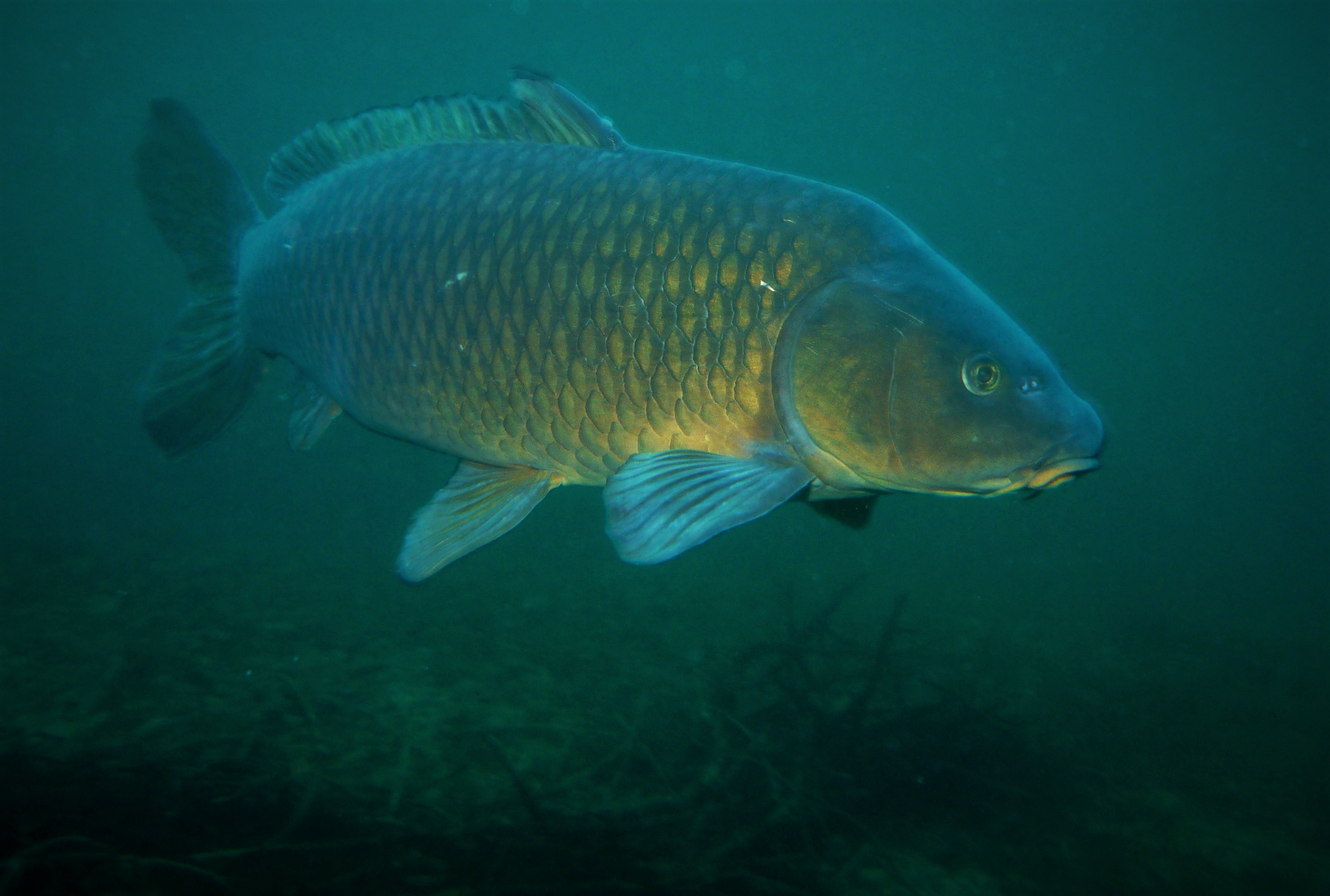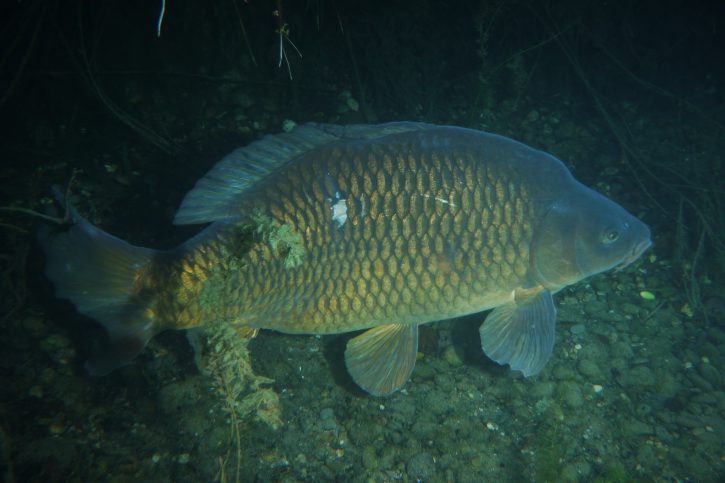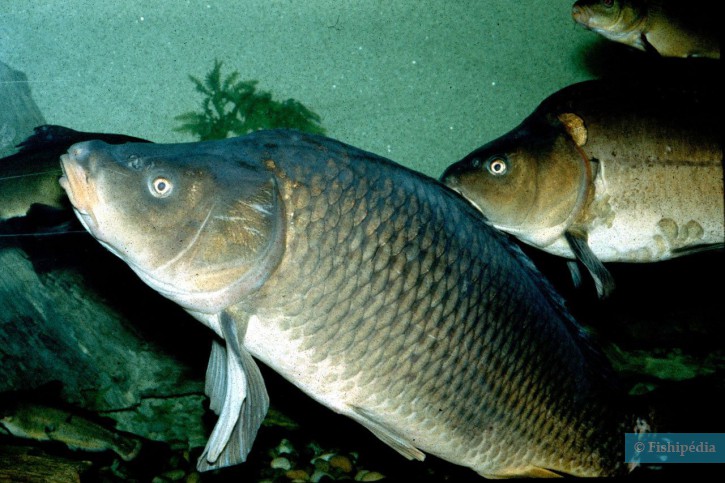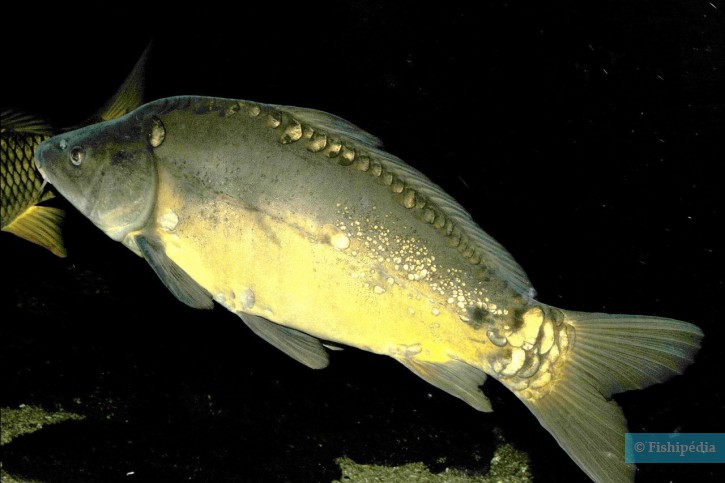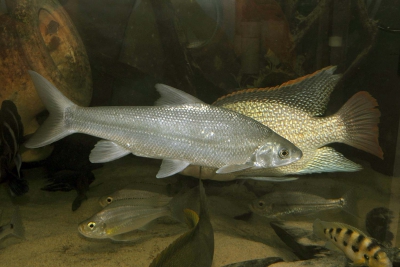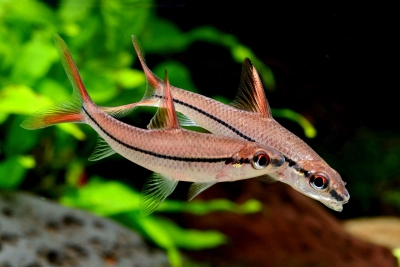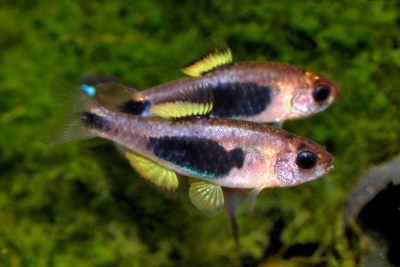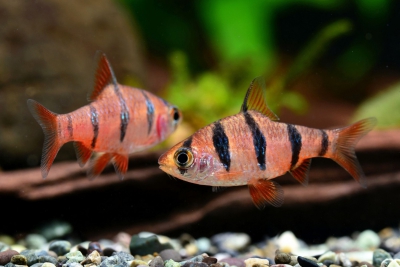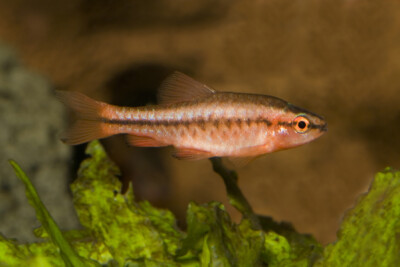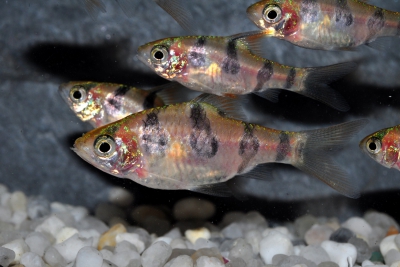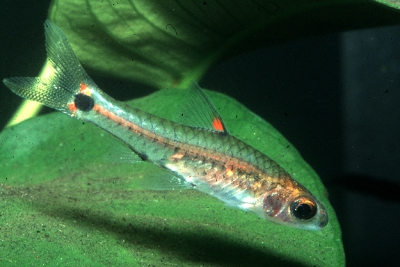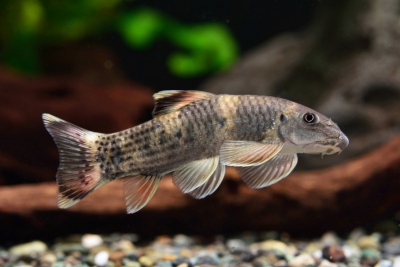Introduction
Cyprinus carpio, more commonly known as the common carp, is a freshwater fish (temperate zone) native to Eurasia.
Who is it?
Morphology
-
Average size75 cm
-
Maximum size150 cm
-
Longevity20 year
-
ShapeOvoid
-
Average size75 cm
-
Maximum size150 cm
-
Longevity20 year
-
ShapeOvoid
How to recognize This fish ?
This fish has the particularity to possess several pairs of barbels, which allow him to search the bottom and to detect the food thus moved.
The common carp has an elongated and stocky body with thick lips. It has a protrusible mouth with four barbels. The dorsal fin has 17-22 branched and robust rays, while the anal fin has 6-7 soft rays. The lateral line is made up of 32 to 38 scales.
Wild carp are completely covered with large similar scales. The color of carp is brown to greenish on the back, transitioning to golden on the belly. The fins are gray-blue, often bordered with red hues.
Several domestic forms have emerged from it: the mirror carp with few scales except for large irregular ones under the dorsal fin and on the caudal fin, the leather carp, nearly scaleless and very dark, the koi carp, less elongated with a higher body and smaller head, ornamental, and available in 125 varieties originating from the Far East.
Sexual dimorphism
The dimorphism of this species is very marked. The female is larger than the male. Females have a more rounded abdomen than males and are generally stouter.
The largest catches exceed 40 kg and are almost always females.
Behaviour & Life cycle
-
dietomnivorous
-
Sociabilityliving in small groups
-
territorialNo
-
Way of livingnocturnal
The common carp is a placid fish although very wary, spending its time searching for food. Experienced anglers are most likely to hook the finest specimens during the night (strictly catch and release of course). During the breeding period, carp perform spectacular "carp jumps." On hot summer days, it is not uncommon to see carp near the surface attracting attention with audible splashes.
It is an omnivorous fish feeding on aquatic crustaceans, insects, worms, plants, algae, and seeds. Its feeding technique of stirring up the mud can alter environmental balances in areas where it has been introduced.
Indeed, by uprooting submerged plants, it increases water turbidity, which limits the penetration of necessary sunlight for photosynthesis, consequently reducing the importance of microbial populations. Turbidity alters the water color, leading to an increase in water temperature and evaporation rate.
Reproduction
-
Reproductionovipare qui pond sur substrat découvert
The common carp is an oviparous fish that spawns on exposed substrate. Carp mature at 2 years for males and 3 years for females. Reproduction is quite late as it requires water temperatures of at least 18°C. Carp and crucian carp can hybridize, resulting in sterile individuals called Kollar carp.
Harmless species
This species does not represent any particular threats to humans when encountered in its natural environment.
Origin and distribution
Geographic distribution & Conservation
-
Invasive speciesYes
The carp has been introduced to many countries worldwide. Originally from central Asia and Eastern Europe, its presence in the Danube dates back to the Neolithic era.
Its spread to southwestern Europe (France, Italy, Spain, etc.) is commonly attributed to the Romans who used it as a food source.
Although widespread, wild common carp is considered "Vulnerable" throughout its distribution range, a status resulting from the development of numerous hybrid forms that have lost some characteristics of the original populations.
According to the International Union for Conservation of Nature, changes in water basins and hybridization have led to a decline of at least 30% in the population over the past 70 years. Carp are particularly sensitive to river regulation as they naturally spawn in flooded areas that are gradually disappearing.
Conservation status of populations (IUCN)
What is its habitat?
Natural environment characteristics
-
Temperature3 - 35 °C
-
pH (acidity)6.5 - 8.5
-
gh (hardness)10 - 15
-
FlowSlow and Stagnant
Biotope presentation
The common carp naturally resides in neutral water. The bottom is typically composed of sand, humus, and mud. Its habitat ranges from barbel zones to brackish environments. It is a typical fish of lower zones (barbel areas) and lentic environments (ponds, backwaters).
It thrives in muddy-bottom waters with dense vegetation. It is a holobiotic migratory species that moves from shallow breeding areas (flooded meadows) to deep waters in winter, where many conspecifics gather.
To go further
Sources & Contributions
Participation & Validation
The Fishipedia team and specialist contributors are committed to providing high-quality content. However, although the information comes from scientific sources or testimonials from specialists, the cards may contain inaccuracies.

Patrick Chartrer

Benoit Chartrer
Translation
Translation done with the valuable contribution of our translators, who make this information available to a wider audience. We sincerely thank them for their commitment.
Bibliographic references
- - GBIF
- - Les Poissons d'eau douce de France - Eric Feunteun - Jean Allardi - Philippe Keith - Biotope Edition - 2011. Collection Inventaires & Biodiversité, publication scientifique du Muséum
